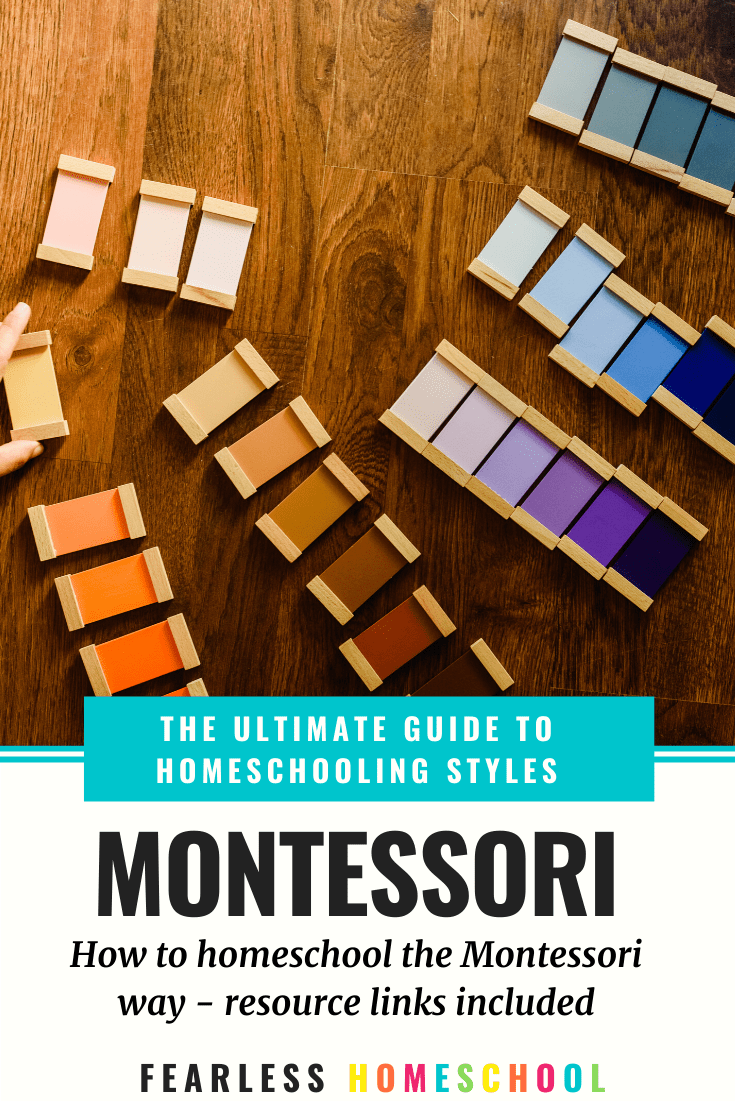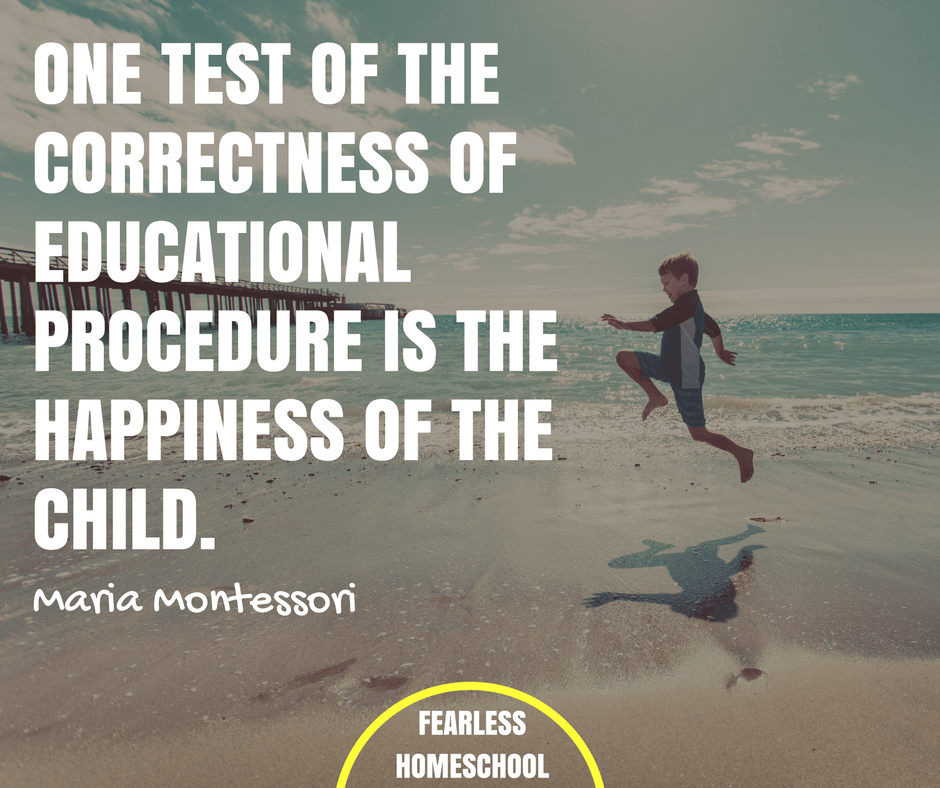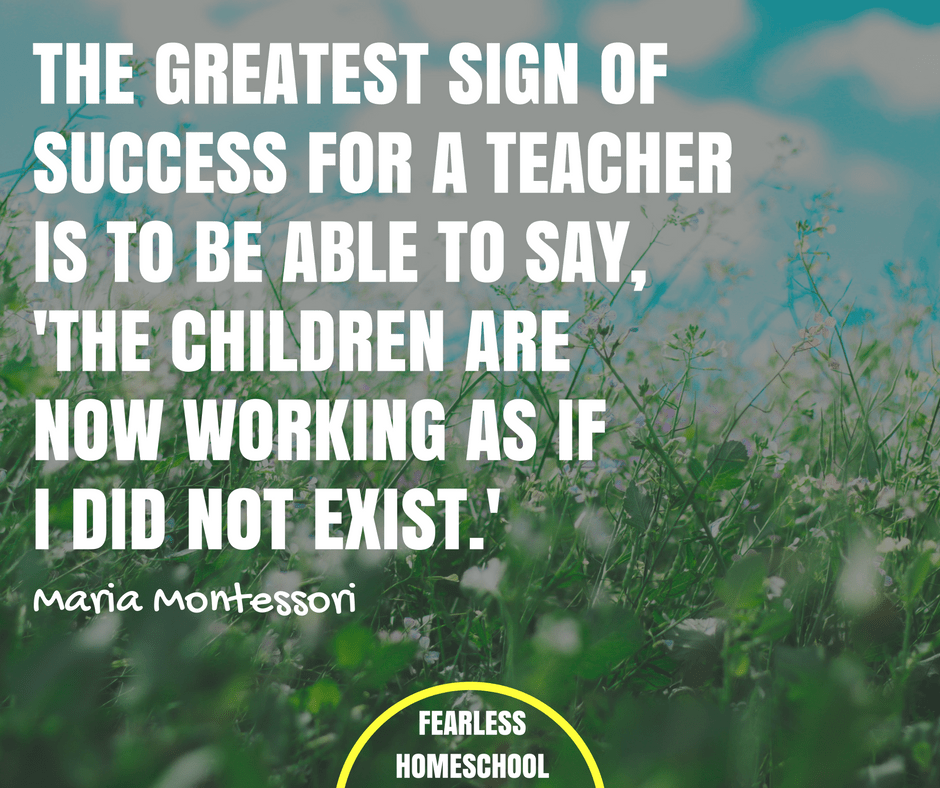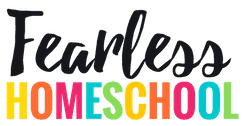Welcome to the seventh post in the Ultimate Guide to Homeschooling Styles series! Click here to view the rest of the series.

The Montessori method of education was created by Maria Montessori (1870-1952). Originally a physician, Montessori started working with young children with special needs. After experimenting with methods to help them learn she then applied the methods she developed to other children. They helped all children learn, and so the Montessori method of education was born.
Montessori believed that children learn no matter what. Therefore, it is better to put effort into improving their environment and modelling desired behaviour rather than teaching directly. Children prefer to follow their interests, and need to know a reason for learning (don’t we all?). Working with them and their abilities enables their natural love of learning and work ethic to shine and grow.

The Montessori method is structured, but child-led. The parent is expected to have deep knowledge of the child and their abilities from observation and interaction. Using this knowledge they can support and amplify natural development of the child using prescribed materials and activities. Montessori developed the theory of sensitive periods – times when the child is especially receptive to and curious about particular knowledge or skill. This is a critical time to learn this skill. Language, numbers, and order are some of the sensitive periods.
Montessori homeschooling seeks to provide opportunities for the child to do it themselves. Participation in everyday activities such as chores is specifically encouraged by the provision of child-sized tools, and teaching the tasks by demonstration. I took on many ideas from Montessori when my children were toddlers. Providing them with an easy-to-access, child-suitable environment and equipment made a visible difference in how they went about their day. They started washing their own dishes, cleaning up after themselves, and did more activities independently once the materials were made easily accessible.

The environment is extremely important. It must be prepared so children can make discoveries and learn new skills easily, as suits their ‘absorbent mind’. This includes having furniture to suit size, having specific places for equipment, pictures on walls at their eye level, and independent activities suitable for their ability. It is important to reduce clutter, both visual and auditory.
There are specific materials in a Montessori classroom. You may have seen sandpaper letters, or sandboxes for writing. Each of these is intended to be introduced at a specific developmental stage, with a prescribed script and usage. After this, the child is expected to use it independently in the prescribed way, with the parent monitoring their use to ensure it’s correct. This is where many homeschoolers trip up when implementing Montessori – we’re not a particularly rigid bunch. We’re more likely to give it to the child, show them how to use it, then let them do what they want with it. Montessori purists frown upon this.
Collaborative learning is also important. Montessori schools have multi-age classrooms. Parents of multiple children tend to find that collaborative learning develops spontaneously while homeschooling. Parents of only children or small families may need to start a playgroup or similar to foster collaborative learning. Montessori discourages competition and builds intrinsic rewards into the activities.

The Good Points
- It’s child-led. Sensitive periods and close observation mean that education is matched to ability
- It encourages early academics without stress or pressure
- It encourages and supports independence (great for homeschoolers!).
- It’s very hands-on and tactile, which makes the learning more interesting and more likely to be retained
- Montessori presents information in multiple formats, which makes it more likely to be retained. This is especially great for kids with special needs, who may need visual, auditory and tactile resources on the same skill presented repeatedly to make it stick.
The Not-so-Good Points
- It’s VERY structured and quite rigid. Some argue that homeschooling cannot produce a true Montessori education. They say a home cannot reproduce the multi-age classroom dynamic, and that an untrained parent is unable to provide proper presentation and use of the materials. Whether this matters or whether it is simply a way of overcomplicating Montessori and protecting the professionalism of it is uncertain. Either way, the parent needs to do a lot of research and learning.
- Cost. Montessori requires quite a lot of ‘stuff’. It’s standard to have a full set of child-sized kitchenware and cleaning equipment. A list I found deemed the following materials essential: Wooden (Knobbed) Cylinders – 4 blocks, Pink Tower, Brown Stair (Broad Stair), Red Rods (Long Rods), Knobless Cylinders, Color Tablets, Geometry Cabinet, Sound Boxes/Cylinders, Rough and Smooth Boards, Smelling Bottles, Fabric Box, Mystery Bag, Geometric Solids, sorting exercises, Constructive Triangles, Binomial Cube, and Trinomial Cube. That’s JUST sensorial – there’s similar lists for language, maths, science, and art. Eek! You can do it on a budget, or DIY, but be prepared to be envious of other people who have seemingly unlimited funds and gorgeous environments.
- The materials are meant to be used in a particular way. Improvisation and mixing materials isn’t encouraged
- It’s more suited to younger children than teens
- Some homeschoolers find the practical activities feel false, and would rather their children engage in real day-to-day activities rather than simulated ones
Further Resources
Teaching Montessori in the Home: Pre-school Years – Elizabeth G. Hainstock
Montessori from the Start – Paula Polk Lillard & Lynn Lillard Jessen
Starting Montessori in the Middle Years – Hill Country Homestead
And take a look at my Montessori Homeschooling Pinterest board to discover fantastic resources that will help you set up your Montessori homeschool – many of them free!
Follow Kelly | Fearless Homeschool’s board Montessori Homeschooling on Pinterest.

Trackbacks/Pingbacks